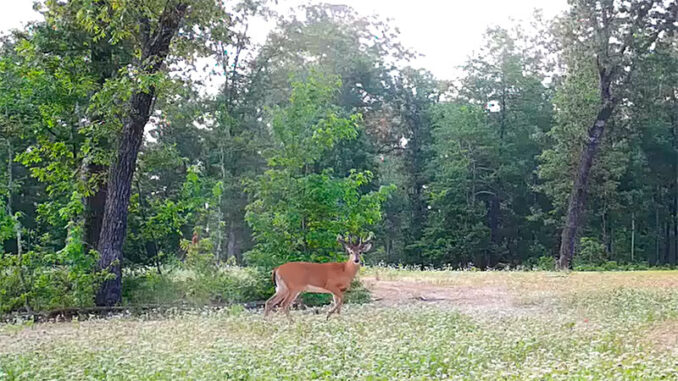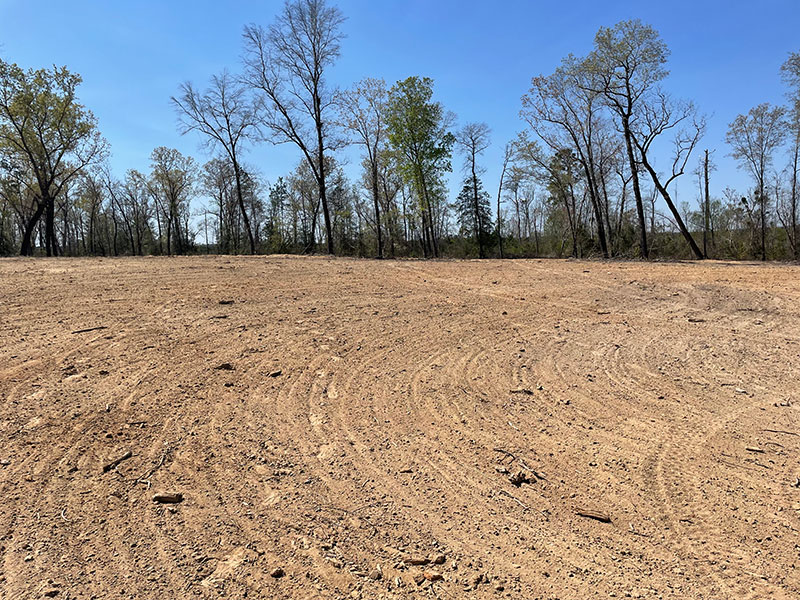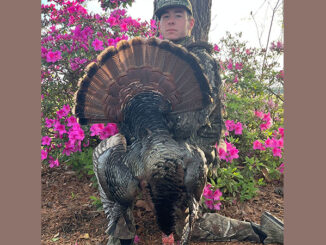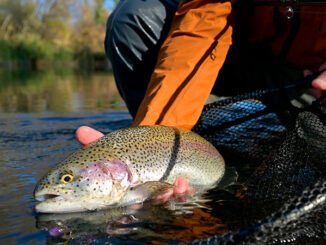
Deer, wild turkey, and other wildlife have needs like everything else in the natural world. If it isn’t obvious enough, food ranks at the top of the list for critical needs for wildlife. For a property to be a haven for deer and other wildlife, a solid food source must be present throughout the year and in great abundance. Every property needs a decent coverage of food plots. And if a property doesn’t have any, they should be created.
Wildlife in the Carolinas in most counties live the good life and have various food options. From oak-lined ridges covered with acorns to massive agriculture fields, just about every county in the two-state area has natural and cultivated food sources that will meet nutritional demands for every species of wildlife out there. But on a smaller scale, some properties are teeming with food options, and others are less-than-ideal and deficient in food options.
Every property can use more food options. Food plots, placed in the right places, can have a positive impact on the land and make the hunting season a little sweeter.
Existing fields are easy places to cultivate plots, but sometimes the better food plots are a little off the grid and tucked back inside the property, well away from roads and other disturbances. And when landowners clear and disk up new ground, a few obstacles will come into play before the fields of green erupt.
Test the soil
First of all, new food plots will be littered with roots, vines, sticks, rocks, and other debris. It will seem as if the ground is growing debris. Over time, these will deplete or become insignificant. The soil will need testing, and soil amendments will need to be added in order to provide the chemical environment for plants to uptake nutrients and grow.
Lime is generally the number one addition needed from the start in most Carolina soils. These soil amendments, along with debris removal, need to be addressed from the start well before the first seed is covered.
So, what should a landowner plant in the springtime in a new plot? Of course, landowners want to plant something that will attract and be beneficial to wildlife. But what seed is best?
While a selection of seed options are available for warm-season plantings, landowners should plant something that has benefits to the soil and wildlife. And in the Carolinas, it is hard to beat buckwheat as a spring planting, especially on new food plot sites.
Buckwheat has a wide range of benefits for both building up the soil and providing a nutritional resource for wildlife of all kinds. Many farmers are using buckwheat as a cover crop. In addition to its ease of planting, buckwheat grows in dense stands that shade out weeds and protects the soil from erosion. But one of the biggest advantages for farmers is that when the buckwheat decomposes in the soil, the buckwheat extracts calcium and phosphorus, and makes it readily usable for the next crop rotation. Buckwheat also helps build up the organic matter in the soil when disked under. Many farmers claim buckwheat helps soften the soil or makes it easier to till. On food plots on new ground, these soil benefits are needed to get the plot established. Buckwheat is the perfect crop to plant on newly-created food plots.
Deer love it
Outside of the soil benefits, the deer love buckwheat. It is full of easily-digestible protein and seems to be very tasty. They will hammer it all summer long. Buckwheat also produces a collection of fragrant white flowers that attract lots of different kinds of insects. Wild turkeys love buckwheat because they have a buffet of insects to eat and they like eating both the buckwheat sprouts, the seeds themselves, and then the colonies of insects that parade through the greenery on a daily basis.
 Luckily, buckwheat is one of the easiest plants to establish. It actually prefers a slightly acidic soil composition, and doesn’t grow well in alkaline soils. This is good news for newly-created plots from forests as they will typically have a low pH. Buckwheat can be planted without adding any fertilizer, but new soils will often be deficient in all soil nutrients where an addition of a balanced fertilizer, such as 10-10-10, 13-13-13, 20-20-20, or whatever is available would be beneficial for the first planting.
Luckily, buckwheat is one of the easiest plants to establish. It actually prefers a slightly acidic soil composition, and doesn’t grow well in alkaline soils. This is good news for newly-created plots from forests as they will typically have a low pH. Buckwheat can be planted without adding any fertilizer, but new soils will often be deficient in all soil nutrients where an addition of a balanced fertilizer, such as 10-10-10, 13-13-13, 20-20-20, or whatever is available would be beneficial for the first planting.
Buckwheat can be drilled at 50 pounds per acre or broadcasted at a rate of 75 pounds per acre when soil temperatures are at least 70 degrees. Seeds should be lightly covered without compacting the soil too much.
For centuries, buckwheat has been used as both a cover crop and food resource. It is still widely used today and is the perfect crop to plant on newly-created food plots for the spring planting season. It is the first crop that should come to mind for anyone establishing a new food plot.
Get it started right:
Preparation is the key to getting your food plot planted. Without the proper preparation, other efforts to plant your food plot will not garner the maximum benefits.





Be the first to comment